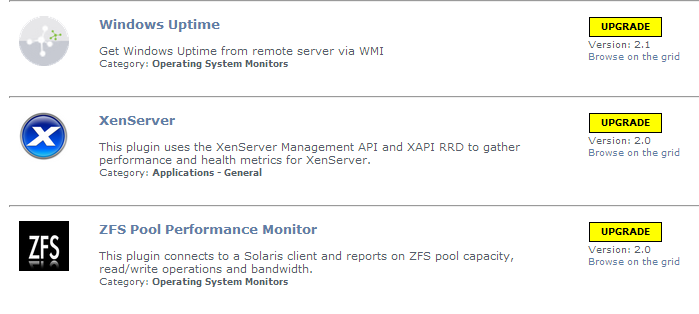...
The File System Capacity service monitor now accommodates users with more complex file-system monitoring requirements. The service monitor's configuration is no longer capped at 5 file systems per host (users who wish to monitor 100 files file systems may commence high-fiving).
...
We have added over 20 new variables that can be used with custom alert messages, script alerts, or recovery scripts. These include more Element properties associations with other up.time objects such as Element groups and service groups. Diagnostic aids include service URLs and incident numbers, which uniquely identify an outage as it transitions through different statuses, on its way to a recovered state. Visit the Alert Profile and Action Profile Variables documentation for a summary of all available variables.
Note that these new variables deprecate the Enhanced Alert Profile Variables plugin. See Upgrade Notices for more information.
up.time NetFlow
This release includes various changes to integration with up.time Netflow (Scrutinizer).
...
| Scrutinizer 8.6.0 | |
| Scrutinizer 11.0.x–11.4.x | |
| Scrutinizer 11.5.x |
Upgrade Notices
If you The 7.3 release affects users who have deployed plugins, the 7.3 upgrade process is as follows:.
Enhanced Alert Profile Variables Plugin
The functionality of the Enhanced Alert Profile Variables plugin has been added directly to up.time. If this plugin has been installed, it will need to be removed after upgrading to 7.3 to ensure email notifications continue to be properly sent. You can uninstall the plugin using the legacy Plug-in Manager.
If you have already removed the Plug-in Manager from your up.time installation, you can manually remove the Enhanced Alert Profile Variables plugin by deleting the alert_mod.jar from your <uptime_dir>/core/custom_jars/ directory, then restarting the up.time Data Collector service (uptime_core on Linux, and up.time Data Collector on Windows).
Upgrading Plugins
The 7.3 upgrade process is as follows:
- up.time: The conversion process up.time: The conversion process will scan your existing plugins to verify they are are based on the Grid.
- up.time: Plugins that are recognized to have been previously downloaded from the Grid will be flagged for an upgrade and re-versioned at 0.9.
- user: To complete the plugin conversion process, after upgrading up.time, proceed to the Extension Manager (Services > Add Service Monitor > Want More? Search for monitors.). All plugins should be flagged for an upgrade (these are supposed to show v0.9):
- user: Upgrade each plugin.
- up.time: After upgrading, the Grid-based plugins will display as version 1.0 to signify the reboot to unified extension deployment, regardless of what their previous version was.
- user: Moving forward, use the Extension Manager to manage your plugins.
- user: Uninstall the Plug-in Manager, as it is no longer needed to manage plugins. Information on removing it can be found in the knowledgebase article entitled, This Article Does Not Exist Yet.
Installing up.time
On the uptime software Support Portal, you will find various documents and articles that will guide you through a first-time installation or upgrade.
...



